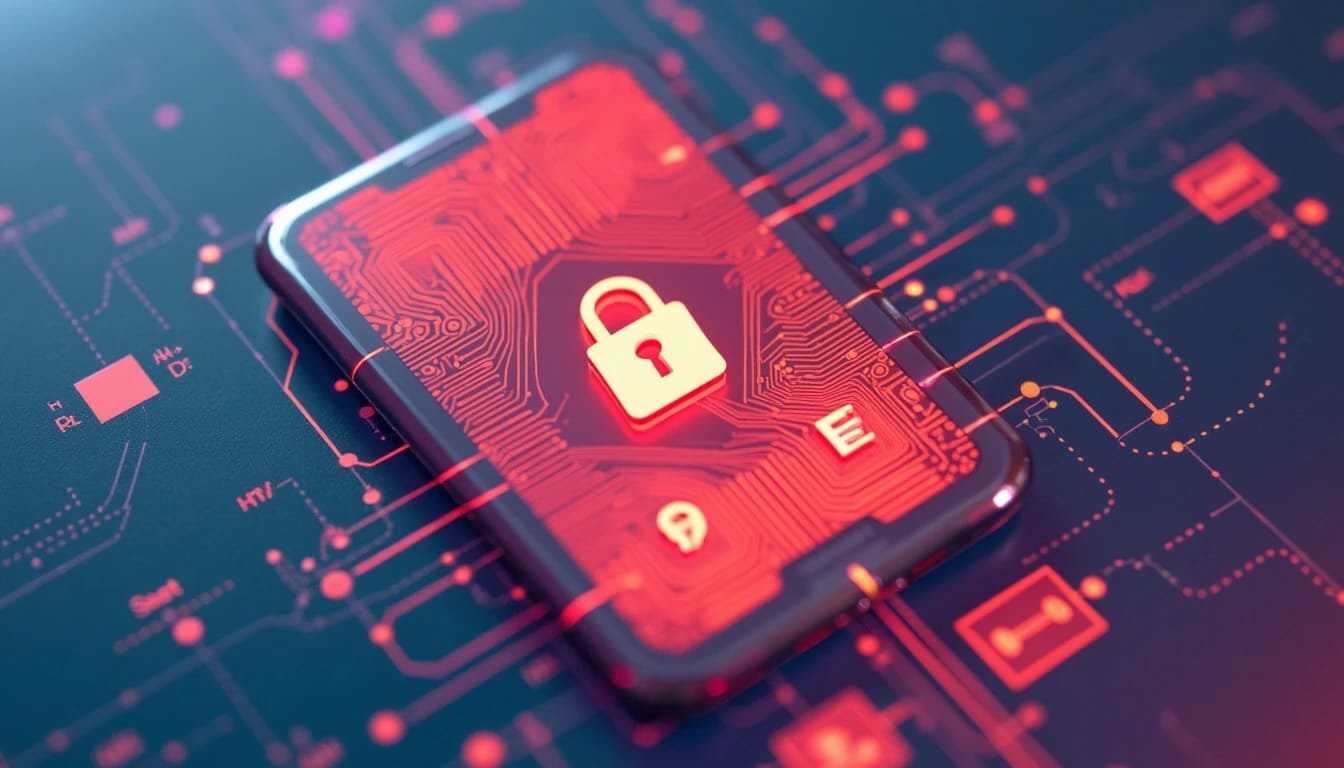Certainly! Here’s the translation into American English:
—
Although Apple maintains an ecosystem considered one of the safest on the market, the reality in 2025 is more complex: new vulnerabilities, legal changes, and the sophistication of attacks require a critical review of iPhone security and its comparison to Android.
Perceived Security vs. Real Security
For over a decade, the iPhone has been perceived as synonymous with digital security. This reputation is based on a combination of factors: Apple’s closed ecosystem, strict App Store oversight, its centralized update model, and mechanisms such as default encryption, biometric authentication, and process separation (sandboxing).
But in 2025, the question is no longer whether an iPhone is generally safe, but to what extent it can remain so in a changing environment, with an ever-expanding attack surface, regulations forcing system openness, and a more professionalized cybercrime industry.
New Threats and Risk Factors in iOS
Regulatory Changes: The Impact of the Digital Markets Act (DMA)
The European Union’s Digital Markets Act has compelled Apple to make unprecedented concessions in iOS, such as allowing:
- Installation of third-party app stores, removing the exclusivity of the App Store.
- Use of alternative web browsers to Apple’s WebKit, which may introduce vulnerabilities not controlled by Apple.
- Expanded access to system functionalities for external apps, including Wi-Fi connectivity and push notifications.
These measures, aimed at enhancing competition, could also weaken the core security architecture of iOS. Apple has warned that system openness could facilitate user tracking, unauthorized access to personal data, and manipulation of sensitive interfaces. Although it currently affects only EU users, other jurisdictions are likely to adopt similar policies.
Specific Attacks and Threats to iPhone in 2025
1. Jailbreak and Loss of Essential Protections
Allowing unofficial installations via jailbreak disables features like verified boot and execution protection, removing one of the most effective barriers of iOS.
2. Malware within the App Store
Although rare, it is not nonexistent. Recent cases include:
- A fake LastPass to steal credentials.
- The SparkCat malware, disguised as a delivery or artificial intelligence app.
- Fake cryptocurrency wallet apps like “Rabby Wallet & Crypto Solution.”
3. Progressive Web Apps (PWA)
These can be installed from browsers without App Store intervention. ESET has detected their use to spread banking malware, exploiting silent installations of apps that mimic real banks.
4. Phishing, Impersonation, and Malicious MDM Profiles
Attempts to impersonate Apple Support via calls, SMS messages, or emails are becoming increasingly credible. Some sophisticated attacks have managed to install management profiles (MDM) to remotely control devices and even capture biometric data.
5. Public Wi-Fi Networks
Without a VPN, any open connection can serve as a pathway to intercept sensitive data, redirect traffic, or capture passwords. Apple cannot mitigate this risk if a user connects to an unencrypted network.
6. Zero-Day Vulnerabilities and Spyware
Highly specialized groups, even state-sponsored, exploit unpatched vulnerabilities to install spyware. Cases like Pegasus from NSO Group or GoldPickaxe have demonstrated the existence of threats even for users with updated, non-jailbroken devices.
Security Recommendations for iPhone Users
- Keep iOS and your apps updated. Updates fix critical vulnerabilities.
- Avoid jailbreaking. You will lose updates, access to key security features, and open the door to malware.
- Only install from the official App Store. Even with the option of external stores, avoid using them unless absolutely necessary.
- Enable Face ID, Touch ID, and strong passwords. Combine biometrics with robust authentication.
- Enable two-factor authentication (2FA) for your Apple accounts and other platforms.
- Be cautious of unexpected links or emails. Do not provide credentials or download attachments without verifying their origin.
- Do not connect to public Wi-Fi networks without a VPN. Protect your data with an encrypted connection.
- Enable Lockdown Mode if you believe you may be a target of targeted attacks.
iPhone or Android? Security Comparison in 2025
| Feature | iPhone (iOS) | Android (general version) |
|---|---|---|
| Distribution Model | Centralized (Apple controls hardware and software) | Fragmented (multiple manufacturers and layers) |
| Security Updates | Simultaneous for all compatible devices | Depends on manufacturer and model |
| App Control | Only App Store (except in the EU and jailbreak cases) | Google Play + external stores from the start |
| Speed of Security Patches | High | Variable |
| App Permissions | Restricted by default | More flexible but manually configurable |
| Hardware and Firmware Management | Integrated into the Apple ecosystem | Diverse, with less control over the entire chain |
| Resistance to Zero-Day Spyware | High but not absolute (see Pegasus, GoldPickaxe) | Variable by manufacturer and version |
| Full Disk Encryption Support | Enabled by default | Depends on model and user configuration |
| Enterprise Environment (MDM) | Very robust and mature | Also strong, but more heterogeneous |
Conclusion:
The iPhone remains generally more secure due to its closed model, unified updates, and integration of hardware and software. However, the gap is narrowing with Android, especially in high-end models with dedicated security chips (like Google Pixel with Titan M2 or Samsung Galaxy with Knox). The great advantage of iOS—the total control by Apple—may be compromised by regulatory demands for openness, while Android has significantly improved its security policies and user protection.
In summary, iPhone security remains high but not absolute. In an increasingly hostile digital world with an expanding attack surface, vigilance, constant updates, and user education are as important as the device being used. Security is no longer a brand guarantee but a shared responsibility between manufacturer and user.
via: Apple News
—

